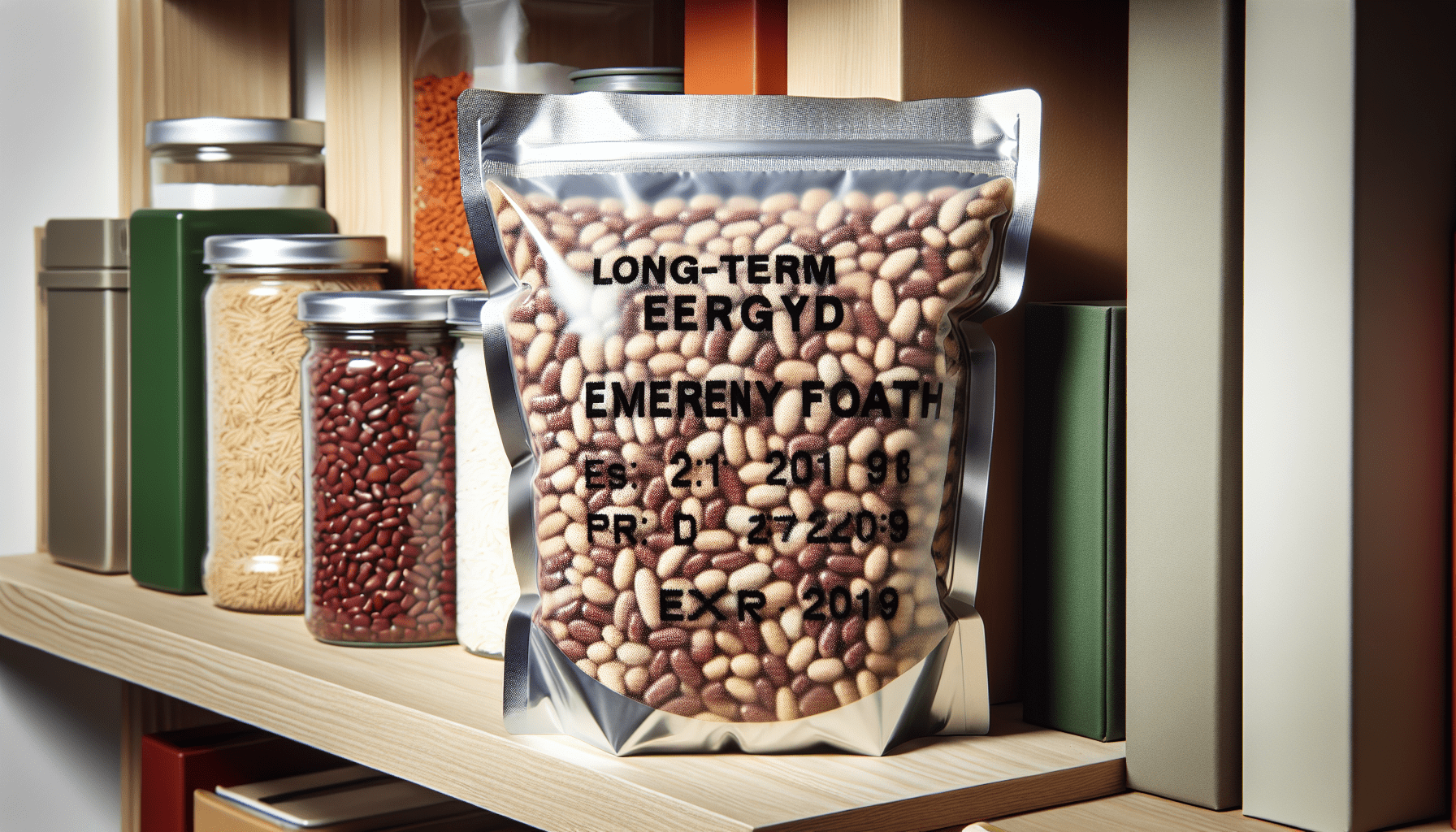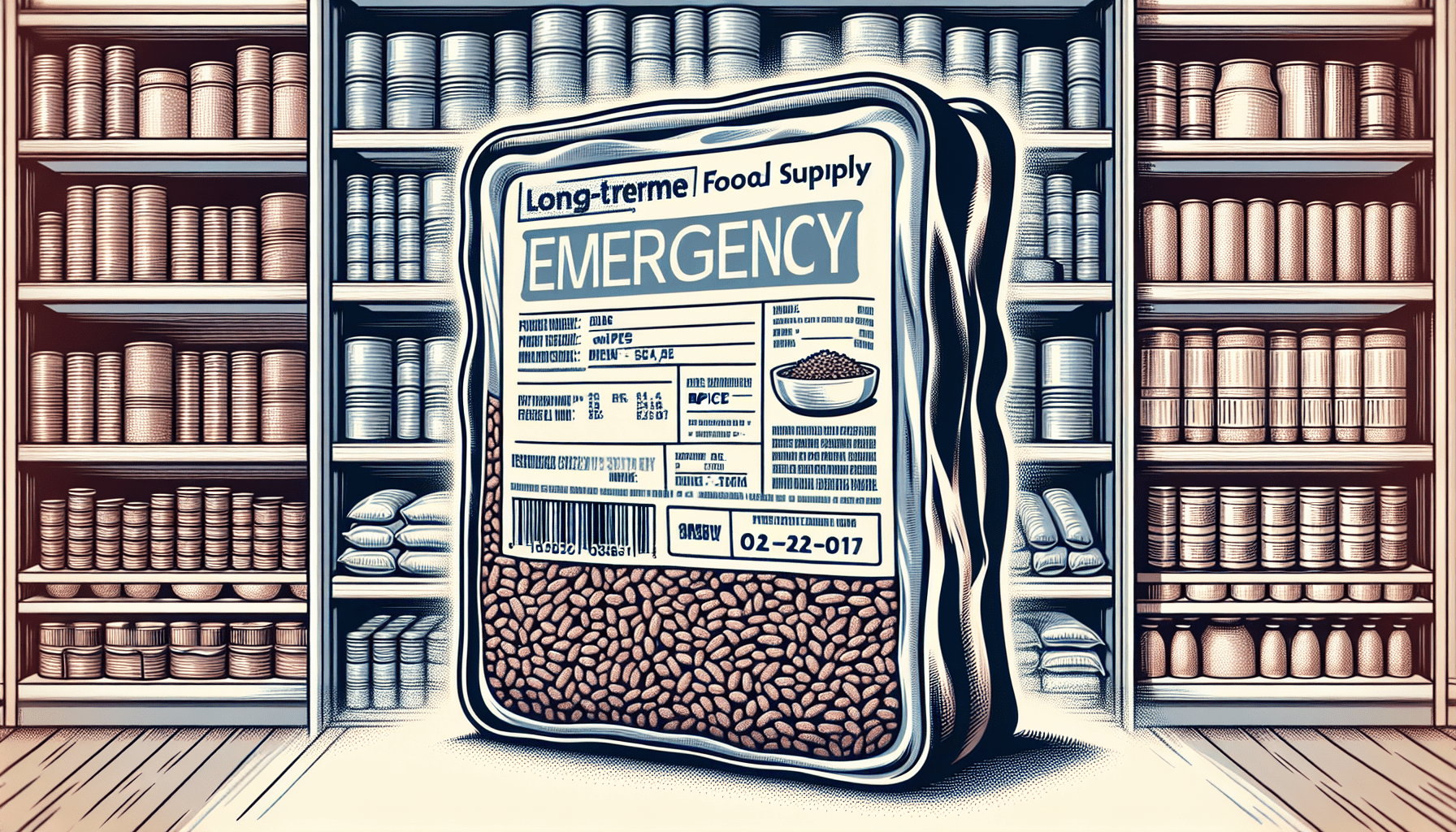Have you ever wondered how long emergency food really lasts? Whether you’re preparing for a natural disaster, a pandemic, or any other unforeseen circumstances, having a stockpile of emergency food can provide peace of mind. But an essential question remains: How long can you rely on this emergency food to sustain you and your family?
Understanding Emergency Food Shelf Life
The shelf life of emergency food can vary greatly depending on its type and storage conditions. Knowing how long these items can last is crucial for effective planning and preparedness.
Factors Affecting Shelf Life
Several factors can impact how long emergency food remains safe and nutritious. These include:
- Type of Food: Different foods have different shelf lives. Canned goods, freeze-dried meals, and vacuum-sealed products all have varying durations they remain consumable.
- Storage Conditions: Temperature, humidity, and light exposure can significantly affect food longevity. Optimal storage conditions can extend shelf life.
- Packaging: The packaging material and method can also influence how long food lasts. Properly sealed and packaged food will generally have a longer shelf life.
- Preservatives: Some foods contain preservatives that extend their shelf life, while others are more natural and may spoil sooner.
Types of Emergency Food and Their Longevity
Emergency food can be categorized into several types, each with a differing shelf life. Knowing how long each lasts can help you make informed decisions when building your emergency food supply.
Canned Goods
Canned goods are a popular choice due to their long shelf life and ease of storage. Most canned foods can last between 2 to 5 years if stored correctly.
| Food Type | Shelf Life |
|---|---|
| Vegetables | 2-5 years |
| Fruits | 1-2 years |
| Meats/Fish | 3-5 years |
| Soups/Stews | 2-5 years |
Freeze-Dried and Dehydrated Foods
Freeze-dried and dehydrated foods are another excellent option, especially for those who need lightweight and convenient food supplies. These generally have a longer shelf life than canned goods, often ranging from 10 to 25 years.
| Food Type | Shelf Life |
|---|---|
| Fruits | 25 years |
| Vegetables | 20-25 years |
| Meals (e.g., stews) | 10-25 years |
| Meats | 20-25 years |
MREs (Meals Ready to Eat)
MREs are designed for military use and are built to last. They typically have a shelf life of up to 5 years, depending on storage conditions.
| Food Type | Shelf Life |
|---|---|
| MRE Entrees | 3-5 years |
| MRE Snacks | 2-3 years |
| MRE Sides | 3-4 years |
Dry Goods
Dry goods like rice, beans, and pasta are staples in many emergency food supplies. When stored properly, they can last a long time.
| Food Type | Shelf Life |
|---|---|
| Rice | 20-30 years |
| Beans | 10-30 years |
| Pasta | 20-30 years |
| Flour | 10-15 years |
Vacuum-Sealed Foods
Food items that are vacuum-sealed tend to last longer than those exposed to air. The reduced oxygen environment slows down the degradation process.
| Food Type | Shelf Life |
|---|---|
| Vegetables | 1-2 years |
| Meats | 1-2 years |
| Snacks | 1 year |

Optimal Storage Conditions
To ensure your emergency food lasts as long as possible, it’s essential to store it under optimal conditions. Here are some best practices for storing emergency food:
Temperature
Temperature plays a crucial role in food preservation. Most emergency foods should be stored in a cool, dry place. Ideal temperatures range from 50°F to 70°F (10°C to 21°C). Excessive heat can shorten the shelf life significantly.
Humidity
Humidity is another critical factor. High humidity can lead to mold growth and spoilage, especially for dry goods. Aim to store your food in a location with low humidity levels, ideally below 15%.
Light Exposure
Exposure to light can degrade nutrients and cause spoilage. Store your emergency food in a dark place or use opaque containers to block light.
Avoidance of Pests
Pests can be a significant issue when storing food long-term. Use airtight containers and ensure your storage area is clean and free from potential infestations.
Rotation and Maintenance
Just like any other stored items, your emergency food requires regular maintenance and rotation to ensure it’s still good when you need it.
Regular Checks
Periodically check your stockpile for any signs of spoilage or damage. Look for bulging cans, torn packaging, or any indications of pests.
Rotation System
Implement a rotation system where you consume older items first and replace them with fresh stock. This practice, often referred to as “first in, first out,” helps ensure that your food remains within its best-by date.
Proper Labeling
Clearly label each item with its purchase date and expected expiration date. This makes it easier to manage your stock and organize a rotation system.

Special Considerations
There are a few special considerations to keep in mind when planning your emergency food storage.
Dietary Restrictions
If anyone in your family has dietary restrictions or food allergies, make sure your emergency food supply accommodates these needs. Look for gluten-free, low-sodium, or vegan options if necessary.
Water Supply
Many emergency foods, particularly freeze-dried and dehydrated options, require water for preparation. Ensure you have a sufficient water supply to rehydrate these foods.
Nutritional Balance
While it’s essential to stock up on foods that last, also consider nutritional balance. A well-rounded diet is crucial for maintaining health, especially during stressful situations. Include a mix of protein, carbohydrates, and fats, along with vitamins and minerals.
Emergency Food Kits
Emergency food kits can be a convenient option, especially for those new to prepping. These kits are often designed to provide balanced nutrition and can vary in terms of shelf life and serving size.
Short-Term Kits
Short-term kits are generally meant to last a few days to a couple of weeks. They’re great for minor emergencies or situations where you expect to be able to access fresh supplies relatively quickly.
| Kit Type | Duration | Shelf Life |
|---|---|---|
| 72-Hour Kits | 3 days | 5-10 years |
| 1-Week Kits | 7 days | 5-10 years |
| 2-Week Kits | 14 days | 5-10 years |
Long-Term Kits
Long-term kits are designed for extended emergencies, ranging from a month to several years. They often include a variety of meals and are packaged to last.
| Kit Type | Duration | Shelf Life |
|---|---|---|
| 1-Month Kits | 30 days | 10-25 years |
| 3-Month Kits | 90 days | 10-25 years |
| 1-Year Kits | 365 days | 10-25 years |

Common Myths About Emergency Food Shelf Life
There are several misconceptions about emergency food that can lead to improper storage or unrealistic expectations. Let’s debunk some common myths.
Myth 1: All Canned Foods Last Forever
While canned foods have a long shelf life, they don’t last forever. Factors like storage conditions and the type of food inside affect their longevity. Always check expiration dates and monitor for signs of spoilage.
Myth 2: You Only Need Canned Foods in Your Stockpile
Relying solely on canned foods can lead to an unbalanced diet. It’s essential to have a variety of food types, including freeze-dried, dehydrated, and dry goods, to ensure nutritional balance.
Myth 3: Expiration Dates Are Absolute
Expiration dates are guidelines, not hard rules. Many foods are still safe to consume after their expiration date if stored properly. However, nutritional value may decline over time.
Myth 4: MREs Are Only for the Military
While MREs were originally designed for military use, they can be a valuable part of your emergency food supply. They are convenient, nutritionally balanced, and have a decent shelf life.
Practical Tips for Extending Emergency Food Shelf Life
Here are some actionable tips to help you extend the shelf life of your emergency food supply:
- Use Mylar Bags: These bags provide an excellent barrier against light, moisture, and pests.
- Include Oxygen Absorbers: Place oxygen absorbers in your food storage containers to reduce oxygen levels and prolong shelf life.
- Keep Inventory: Maintain a detailed inventory list with purchase and expiration dates to help manage rotation.
- Utilize Silica Gel Packs: These can help control moisture levels, especially in humid environments.
- Regularly Update Your Stock: Make it a habit to check your stockpile every six months and update as necessary.

Food Safety and Signs of Spoilage
Understanding the signs of food spoilage is crucial for maintaining a safe emergency food supply. Consuming spoiled food can lead to food poisoning, which is the last thing you need in an emergency.
Signs of Spoiled Food
- Canned Goods: Look for bulging cans, rust, and leaks. The presence of these signs often means bacterial growth.
- Freeze-Dried/Dehydrated Foods: Check for mold, off smells, and changes in texture.
- Dry Goods: Pests like weevils, bugs, or any unusual smells can indicate spoilage.
- MREs: Torn or damaged packaging often means the food is compromised.
What to Do If You Find Spoiled Food
If you come across spoiled food, it’s essential to dispose of it properly to avoid contaminating other items. Double-bag the spoiled food in plastic and dispose of it in an outside trash bin. Clean the storage area thoroughly to ensure no contamination remains.
Conclusion
Understanding how long emergency food lasts and knowing how to store it correctly is crucial for effective disaster preparedness. By keeping in mind the types of foods available, their individual shelf lives, and optimal storage conditions, you can ensure your emergency food supply remains safe, nutritious, and ready when you need it the most. Regular maintenance, such as checking for spoilage and rotating stock, further ensures that your food supply will be reliable. Empower yourself with this knowledge, and you’ll have one less thing to worry about when disaster strikes.


